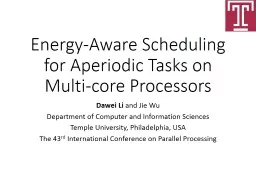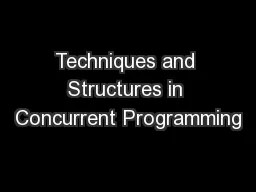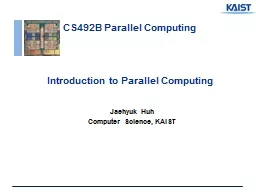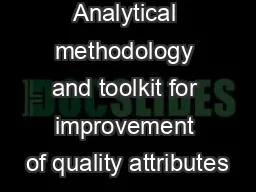PPT-Task Scheduling for Highly Concurrent Analytical and Transa
Author : liane-varnes | Published Date : 2016-04-09
MainMemory Workloads Iraklis Psaroudakis EPFL Tobias Scheuer SAP AG Norman May SAP AG Anastasia Ailamaki EPFL 1 Scheduling for high concurrency 2 Queries gtgt
Presentation Embed Code
Download Presentation
Download Presentation The PPT/PDF document "Task Scheduling for Highly Concurrent An..." is the property of its rightful owner. Permission is granted to download and print the materials on this website for personal, non-commercial use only, and to display it on your personal computer provided you do not modify the materials and that you retain all copyright notices contained in the materials. By downloading content from our website, you accept the terms of this agreement.
Task Scheduling for Highly Concurrent Analytical and Transa: Transcript
Download Rules Of Document
"Task Scheduling for Highly Concurrent Analytical and Transa"The content belongs to its owner. You may download and print it for personal use, without modification, and keep all copyright notices. By downloading, you agree to these terms.
Related Documents














